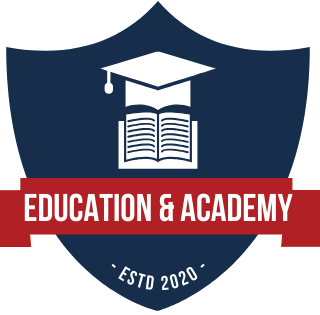Introduction
Homeschooling offers a unique opportunity for personalized education, but it also presents challenges, especially when it comes to assessing a child’s progress. With various educational philosophies and learning styles, finding the right assessment method can feel overwhelming. In this article, we’ll explore five effective assessment methods tailored for homeschooled students, helping you track their learning journey while ensuring they meet educational standards.
“The best assessment is one that not only measures what students know but also inspires them to learn more.”
1. Standardized Tests
Standardized tests are a popular choice among many homeschooling families, as they provide a quantifiable measure of a student’s academic abilities compared to peers. These tests are designed to assess knowledge in subjects like mathematics, reading, and writing.
Benefits:
- Objective Data: These tests offer an unbiased evaluation of a student’s performance.
- Benchmarking: They help identify areas where students excel or need improvement.
Considerations:
While standardized tests can be beneficial, it’s essential to remember that they only capture certain knowledge aspects. It’s advisable to use them as one part of a broader assessment strategy.
“Standardized testing should be a tool, not a crutch. Use it wisely!”
Resources: For more information on standardized testing for homeschoolers, check out the National Center for Fair & Open Testing.
2. Portfolio Assessments
Portfolio assessments involve the systematic collection of a student’s work over time. This method allows parents and students to reflect on their learning process and achievements.
How to Create a Portfolio:
- Collect Work Samples: Include essays, art projects, science experiments, and tests.
- Reflective Journals: Encourage students to write about their experiences and learning.
- Regular Updates: Continuously add to the portfolio to showcase progress.
Benefits:
- Comprehensive Overview: Portfolios provide a holistic view of a student’s capabilities and growth.
- Personalized Learning: They can be tailored to reflect each child’s unique learning journey.
“A portfolio is more than just a collection; it’s a story of growth and discovery.”
Visual Element: Below is a simple table to help you organize your portfolio contents effectively.
| Portfolio Element | Description |
|---|---|
| Work Samples | Art, essays, projects, tests |
| Reflective Journals | Student’s thoughts on their learning |
| Progress Tracking | Records of goals and achievements |
3. Observations and Anecdotal Records
Observational assessments involve watching students as they engage in learning activities. This method allows parents to gather qualitative data on their children’s learning styles, interactions, and skills.
How to Implement:
- Daily Observations: Take notes on student behavior, skills demonstrated, and engagement levels.
- Structured Assessments: Set specific tasks and observe how the student approaches them.
Benefits:
- Real-Time Insights: These records provide immediate feedback on a student’s strengths and weaknesses.
- Supports Different Learning Styles: Observations can help identify how students learn best.
“Observation is the key to understanding a child’s unique learning process.”
Considerations:
It’s crucial to maintain objectivity and avoid letting personal biases influence your observations.
4. Project-Based Assessments
Project-based assessments encourage students to explore a topic in depth, culminating in a final product or presentation. This method fosters creativity, critical thinking, and problem-solving skills.
How to Implement:
- Choose a Topic: Align projects with curriculum goals or student interests.
- Set Clear Objectives: Outline what you want the student to achieve through the project.
- Present Findings: Encourage students to share their projects with family or friends.
Benefits:
- Engagement: Students often find project-based learning more motivating and enjoyable.
- Skill Development: Projects help students develop research, organization, and presentation skills.
“Learning by doing is the most effective way to engage students and deepen understanding.”
Resources: For ideas on project-based learning, visit Edutopia.
5. Self-Assessment and Reflection
Self-assessment encourages students to evaluate their learning, understand their strengths and weaknesses, and set goals for improvement. This method fosters independence and responsibility for one’s education.
How to Implement:
- Checklists: Create a checklist of learning objectives for students to evaluate themselves against.
- Reflection Prompts: Use guided questions to help students think critically about their learning experiences.
Benefits:
- Empowerment: Students take ownership of their education, leading to greater motivation.
- Skill Development: Promotes critical thinking and self-regulation.
“Self-assessment is a powerful tool for personal growth and accountability.”
FAQs
Q: How do I choose the best assessment method for my child?
A: Consider your child’s learning style, strengths, and the subjects being studied. A combination of methods often works best.
Q: Are standardized tests mandatory for homeschoolers?
A: This varies by state. Some states require annual testing, while others do not. Always check your local homeschooling laws.
Q: Can I use multiple assessment methods?
A: Absolutely! Using a variety of assessment methods provides a more comprehensive view of your child’s progress.
Conclusion
Assessing homeschooled students can be a rewarding process that enhances learning and personal growth. By utilizing a variety of assessment methods, you can tailor your approach to fit your child’s unique needs and learning style. Remember, the goal is not just to measure what they know but to foster a love for learning and continuous improvement. Happy homeschooling!
“The journey of education is not just about reaching the destination; it’s about the learning experiences along the way.”
Also look for: For more insights into educational trends and assessment strategies, check out how education systems adapt in the digital age, which discusses the evolving methodologies in education, including those applicable to homeschooling. You may also find useful information on the role of education academies in modern learning for additional strategies and frameworks that can enhance the homeschooling experience.



